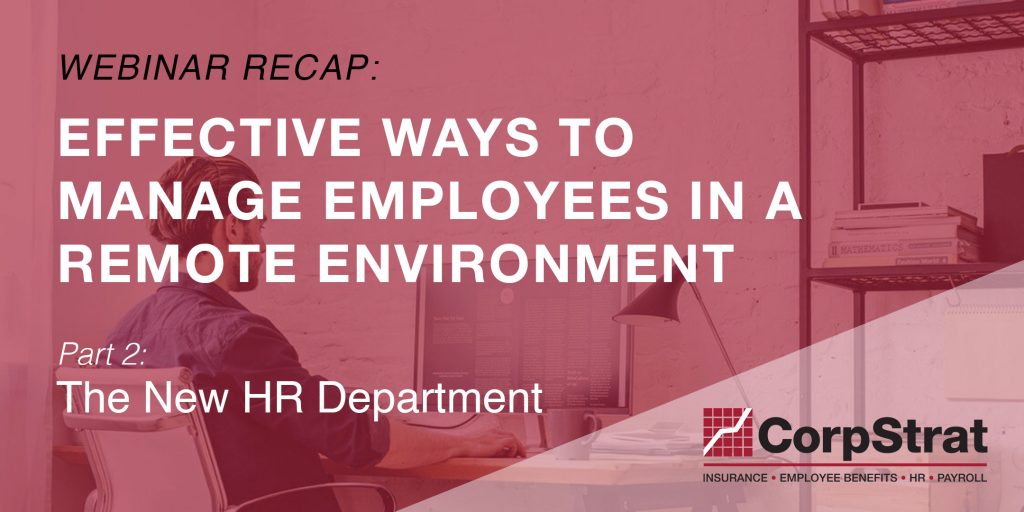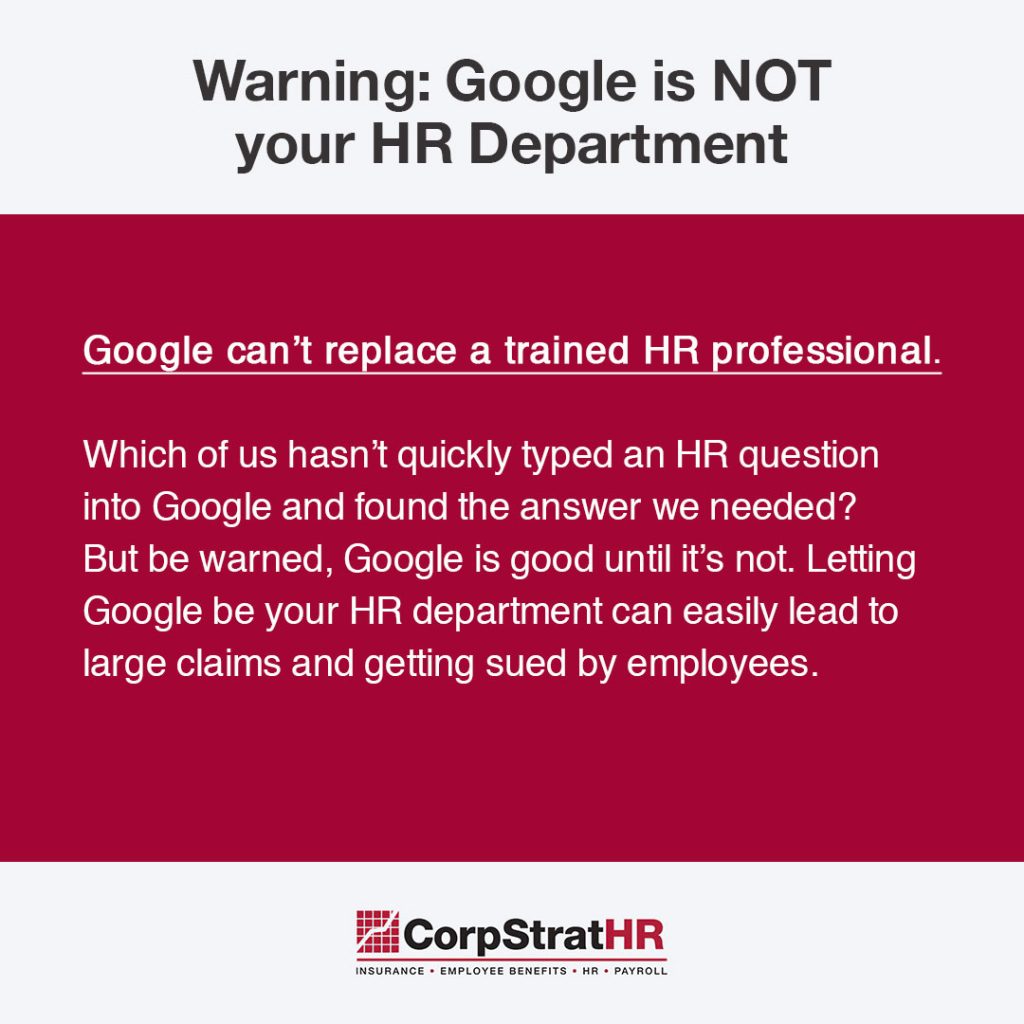A question we often get is, “Should I hire a full-time HR person or outsource my HR?” It’s a really important question and we wanted to address it on the blog today. In general, HR is a critical part of any business operation. So much gets wrapped up in the HR seat, it’s often responsible for: maintaining morale, culture, hiring, firing, delivering employee handbooks, ensuring compliance, and more.
However, many firms decide not to have a full-time, dedicated HR person. Instead they’ll opt to delegate the task among several employees, all who may know a little bit about HR laws and guidelines, but may not know enough of the nuances to keep a company in compliance and help it reach its full potential.
So is there are “right way to do it”? Not necessarily, but there is a “right” solution that best fits your organization. We think there are three primary ways a business can set up their HR department; none of them are “right” or “wrong”, it’s just about finding the option that best fits the employer.
1. Hire a full-time HR person.
This is pretty self-explanatory, you can hire an in-house HR person that focuses solely on managing and executing HR. We think having an in-house HR person may be best for growing companies that have 55-70 plus employees. These organizations are large enough that they really do require the support of a full-time HR person or HR team.
2. Outsourced HR.
If you hop on Google and look for an outsourced HR solution, you’ll find hundreds of them. Very few of them are really good but there’s an unending supply of them. These outsourced HR companies will help you with all the baseline HR tasks: handbooks, compliance, access to form libraries and policies. They can even help with employee agreements like hiring or separation agreements. Often they’ll provide ongoing support through a call center or email.
The main drawback is as a user is you’re left on your own to navigate their system and, because these tech HR companies are so massive, it can be difficult to get someone on the phone to answer your questions directly.
3. Full-service, outsourced HR.
Full-service, outsourced HR provides the same benefits as the outsourced HR department, but you get much more value because you would have a proxy HR department but not on your payroll.
These type of firms, can step in, get to know your team, and help with culture, morale, interviewing, hiring, terminations, conflict resolution, etc. And a lot of times they’ll even work directly with the employees and help drive your HR initiatives. We think this is how you get the best of both worlds.
–
There’s really no right or wrong way to do this. Every company is going to set up their HR department differently, based on the size of their company and their objectives. Sometimes it’s about finding the best combination of the two, depending on the needs of the company.
At CorpStrat, we offer full-service, outsourced HR. If you have questions about how to best set up your HR department, let us know. We’re here to help. marketing@corpstrat.com





